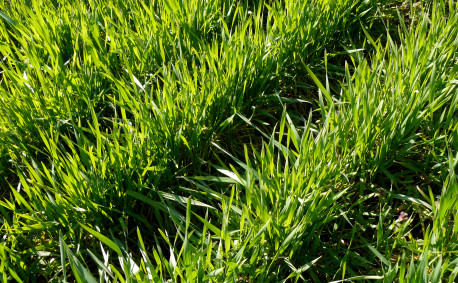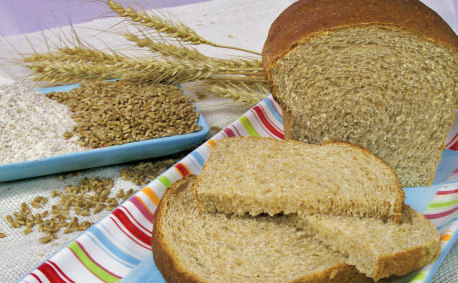Wheat: A Treat for Your Healthy Diet
Ramping up your nutrition know-how can be a frightening task, but wheat is the perfect fit for many looking to add a jump start to their diet.
Whole Grain vs. Enriched Flours
Both whole grain flour and enriched flour are important to maintaining a healthy diet, but what’s the difference between the two? A kernel of wheat contains three parts — the bran, the germ and the endosperm. The outer layer is called the bran, which contains fiber, B vitamins and other minerals. The germ is the plant’s embryo. The endosperm is the germ’s source of nutrition and contains protein and carbohydrates. Whole grain wheat flour contains all three parts of the kernel, while enriched flour only contains the endosperm.
As enriched flour is milled, some nutrients lost in the milling process are added back to the flour, along with additional nutrients like iron and folic acid. This fortified flour is the top source of folic acid in women of child-bearing age and has contributed to reducing neural tube defect rates by 36 percent.
Benefits of regular whole grain consumption include reduced risks of stroke, type 2 diabetes and heart disease. Whole grains are simple to incorporate into your diet. Try swapping out spaghetti, tortillas or loaves of bread for their whole grain alternatives, or be adventurous and try cooking with whole wheat berries.
Both enriched flour and whole grains are important to a healthy diet. The USDA Dietary Guidelines recommend that at least half of the five to eight servings of grains consumed daily should come from whole grain sources. Even though half of Americans’ grains should be whole, many consume less than one serving per day.
Nutrient-Rich
Tiny wheat berries can really pack a nutritional punch, but there are many spooky stories swirling around the grain. One is that the nutritional value of wheat has decreased in modern wheat varieties. A study from the University of Saskatchewan has determined that this tale is as tall as Frankenstein.
The multi-year study focused on growing and harvesting several dozen historical and modern varieties side-by-side and analyzing the protein, carbohydrate and mineral content of each. Despite their roots in history, older wheat varieties were found to have no significant nutritional difference when compared to their modern counterparts.
Are Carbs Bad for You?
Carbohydrates are just about as misunderstood as your friendly neighborhood ghost. Complex carbohydrates are amongst the best fuel for our bodies. In fact, many long distance runners consistently load up on complex carbs before a long run to energize. Wheat foods also provide iron and the four key B vitamins — folic acid, thiamin, riboflavin and niacin.
Learning about wheat nutrition doesn’t have to be a haunting experience. To learn more about wheat foods and their place in a healthy diet, head to wheatfoods.org or kansaswheat.org for more information, as well as healthy, unique recipes.



